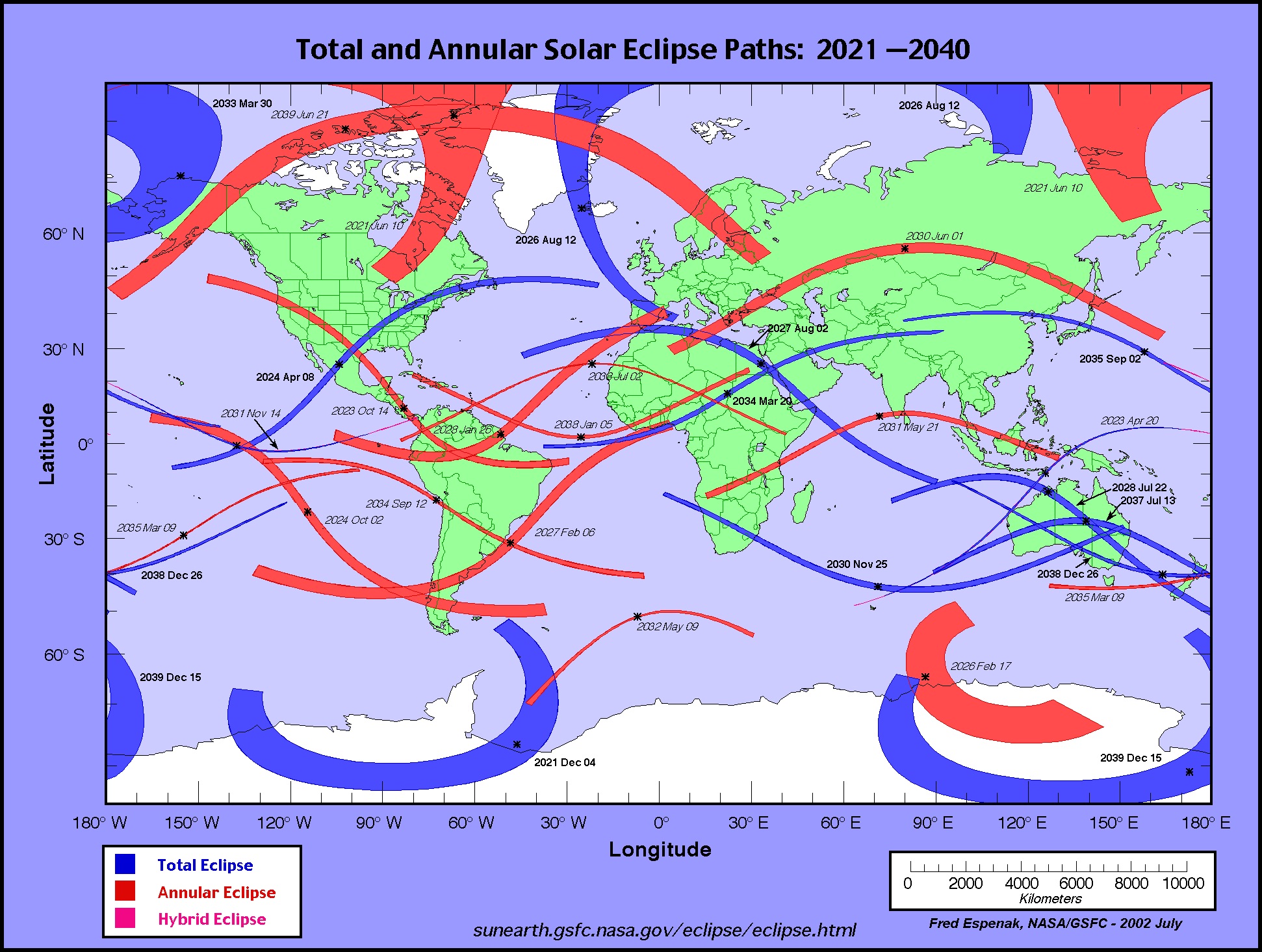
Four More Solar Eclipses Will Be Visible in the U.S. This Century

Paul Sutter is an astrophysicist at The Ohio State University and the chief scientist at COSI science center. Sutter leads science-themed tours around the world at AstroTouring.com. Sutter contributed this article to Space.com's Expert Voices: Op-Ed & Insights.
I suppose there is a small chance you'll miss the upcoming total solar eclipse as it crosses the United States on Aug. 21. Maybe you didn't hear about it. Maybe you forgot. Maybe you couldn't figure out how to travel to the line of totality. Maybe you couldn't be bothered to look outside. I won't judge — it's not the first solar eclipse in history, and it won't be the last.
We would ideally get solar eclipses every month during the new moon, when the Earth, moon and sun form a nice, straight line. Unfortunately, however, the orbit of the moon is tilted with respect to the Earth-sun line, so we get these fantastic natural shows only every few years or so.
The next corona show to grace the United States isn't that far off, coming April 8, 2024. That one will come up from Mexico via Texas, track along the Ohio River, and exit via Lake Erie and Lake Ontario. Some folks are already dubbing that one the "Great North American Eclipse." If you live in New England, while you may have one of the worst spots for the 2017 eclipse, you have to wait only seven years for a decent view. [Total Solar Eclipse 2017: When, Where and How to See It (Safely)]
After that, we'll wait until mid-century for another cluster of eclipses, with one in 2044 barely grazing Montana and one on Aug. 12, 2045, following a similar cross-country trek as 2017's. That one will give the southern half of the U.S. a better show, however.
We then have to wait a few more decades until anything substantial occurs. The southeast will get a double dose in 2052 and 2078, and the northeast will get clipped again in 2079. Alaska gets a couple eclipses to enjoy by itself in 2033 and 2097.
The last eclipse of the century, on Sept. 14, 2099, will be a half-hearted cross-country tour, entering through North Dakota, traveling just south of the Great Lakes and exiting via the mid-Atlantic.
Get the Space.com Newsletter
Breaking space news, the latest updates on rocket launches, skywatching events and more!
Here's the lesson: While there will be plenty of chances to catch a total solar eclipse in your own backyard in the coming century, a century is a very long time — at least in human terms. This year will be one of the best chances for the entire country to enjoy the show, with a large fraction of Americans within a day's drive of totality.
Don't wait!
Follow Paul @PaulMattSutter and facebook.com/PaulMattSutter. Follow us @Spacedotcom, Facebook or Google+. Originally published on Space.com.
Join our Space Forums to keep talking space on the latest missions, night sky and more! And if you have a news tip, correction or comment, let us know at: community@space.com.

Paul M. Sutter is an astrophysicist at SUNY Stony Brook and the Flatiron Institute in New York City. Paul received his PhD in Physics from the University of Illinois at Urbana-Champaign in 2011, and spent three years at the Paris Institute of Astrophysics, followed by a research fellowship in Trieste, Italy, His research focuses on many diverse topics, from the emptiest regions of the universe to the earliest moments of the Big Bang to the hunt for the first stars. As an "Agent to the Stars," Paul has passionately engaged the public in science outreach for several years. He is the host of the popular "Ask a Spaceman!" podcast, author of "Your Place in the Universe" and "How to Die in Space" and he frequently appears on TV — including on The Weather Channel, for which he serves as Official Space Specialist.









